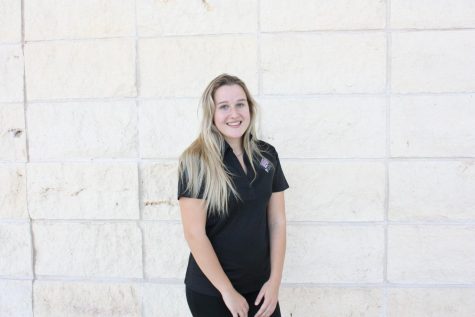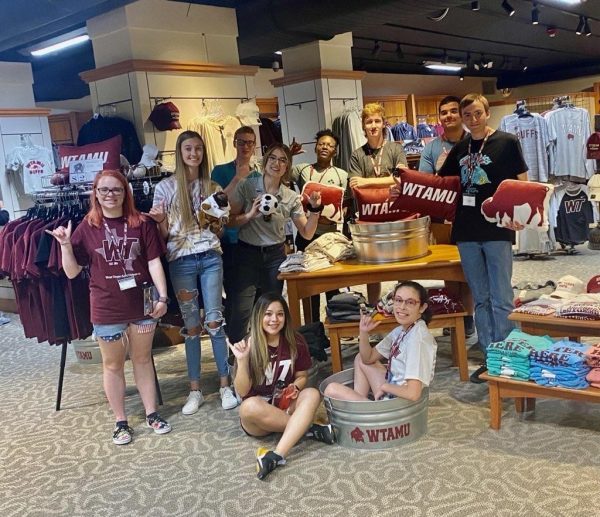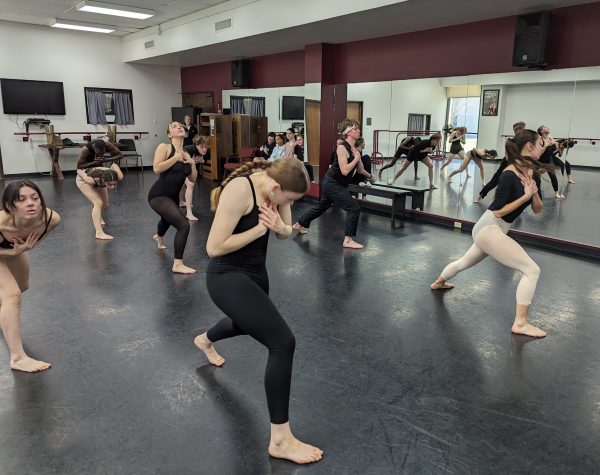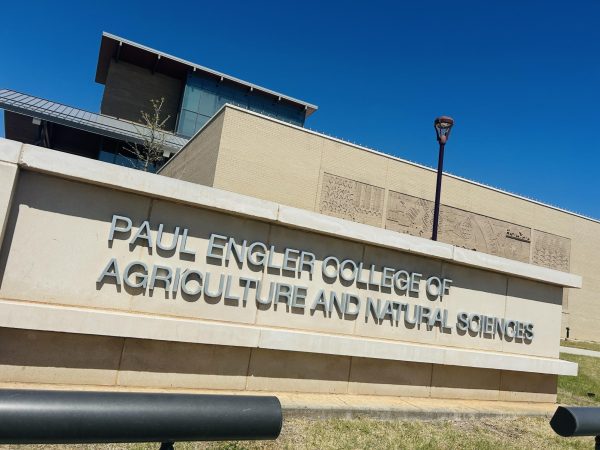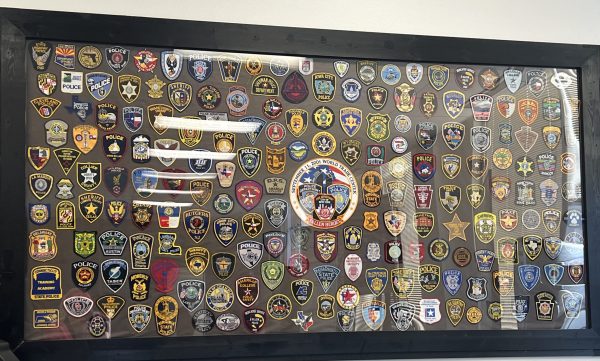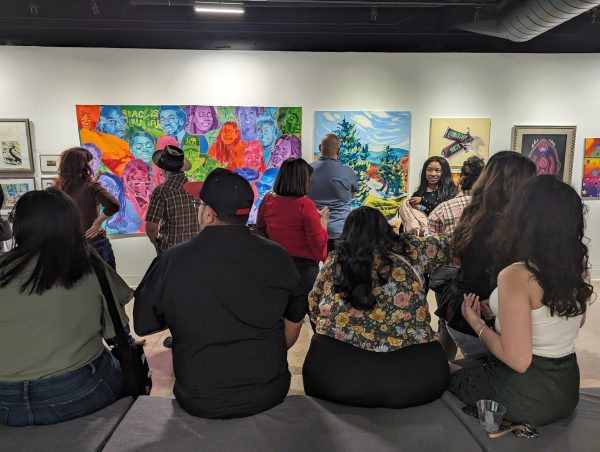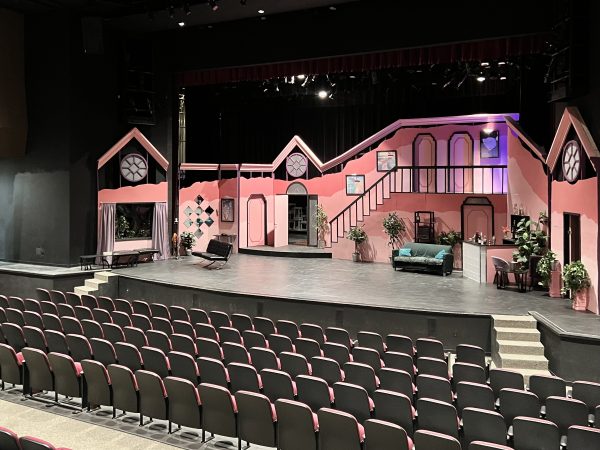WTAMU community recognizes Día de los Muertos
November 26, 2018
A lively holiday in honor of the dead, Día de los Muertos, has been recognized in the West Texas A&M University and Canyon community with dance, music, food and traditional elements such as ofrendas and sugar skulls in the last weeks.
The department of education recognized the holiday by displaying ofrendas open to visitors and school tours from Tuesday, Oct. 23, to Friday, Oct. 26, in the Panhandle Plains Historical Museum, and hosting a ‘‘Gala Fiesta de los Muertos.’’ Local companies, such as Bar Z Winery, also hosted celebrations. The winery partnered with artist Delores Maldonado on a Día de los Muertos celebration Friday, Nov. 2.
The event included music, wine, food and local artists selling their work, all being what Maldonado explained as ‘‘their own take on Día de los Muertos.’’ The free event is a yearly tradition for Maldonado and she explained that it has grown more and more each year.
“I definitely would like to continue it and see it grow, and have more people be a part of it and also learn what it really is,” Maldonado said. “It’s part of me, my culture, and I like it and I want to share it. I wanted it to be open to anyone who is not part of the culture and who is interested, just for everyone to be able to enjoy it.’’
Día de los Muertos originated in central and southern Mexico and, besides the face paintings and sugar skulls, is nothing close to Halloween. Whilst Halloween is all about spooky, Día de los Muertos is all about honoring and remembering the dead. Those who celebrate believe that the souls of the deceased will visit their families between November 1 and 2, and they prepare their homes accordingly.
“I love that, because no one wants to be forgotten. No matter what culture you are,’’ Maldonado said.
A common preparation for the arriving dead an ofrenda, an altar fully decorated with candles, flowers, food and drinks for whoever is being remembered. Often, Día de los Muertos celebrators will leave toys for the children spirits and alcohol for the adult spirits. The altars are decorated with sugar skulls and marigold flowers who have a bright color and sweet smell.
“I like the party, I like color, I like music, I like food, and I love the idea of remembering,” Maldonado said. She is Hispanic but was born in the U.S. and grew up acknowledging Día de los Muertos following catholic tradition by going to mass.
“So it wasn’t the party that I kind of make it into now but it is in other places so I’ve always known about it, and we’ve remembered and honored by going to church and lighting candles.”
One of the artists showcasing her work at the Bar Z Winery event was Elena Vargas, a second generation Chicano who explained that her art is “a little darker than than your happy Día de los Muertos.’’
“I personally suffer from depression, so I found a lightness in the dark, which is what my series of paintings are called,’’ Vargas said. “…I just pretty much did a spin of everybody’s own demons and personal philosophies of death, I guess. Some beautiful, some not.’’
Vargas did not celebrate Día de los Muertos much growing up, but explained that her encounters with death in adult age have made her aware of it.
“Death is a reality we all have to face, but it also gives a good perspective on ‘we are here for such a short amount of time,’’’ she said. “It’s about accepting the inevitable but cherishing the life.’’
Artist Roberto Gaúna from New Mexico, who also showcased his work at the Bar Z Winery, explained that his Día de los Muertos-art has a direct connection to friends he has lost.
“It’s how we were grown up with, just the remembrance of the people that have passed,’’ he said. “It’s not that you’re putting them up in an altar or anything like that, it’s just about remembrance.’’
According to Maldonado, movies such as ‘‘Coco,’’ released in 2017, and ‘‘the Book of Life,’’ released in 2014, helped spread the message and history of Día de los Muertos. She hopes it helps people know about the holiday, but also to clear up any misconceptions.
“Some people just don’t know, for example you can see sugar skulls along with Halloween decorations,” Maldonado said. “And a lot of people are just attracted to the aesthetic [of Día de los Muertos].
“…I would like for people to know the true meaning, and that it is different from Halloween.’’
In the movie ‘‘Coco,’’ the character Héctor is unable to cross over on Día de los Muertos from the Land of the Dead to the living world because his picture is not up on an ofrenda. The movie highlights the spiritual importance of remembering the dead on the holiday, and decorating an ofrenda in their remembrance.
“It is a beautiful holiday to remember those who aren’t with you,’’ Maldonado said.

























